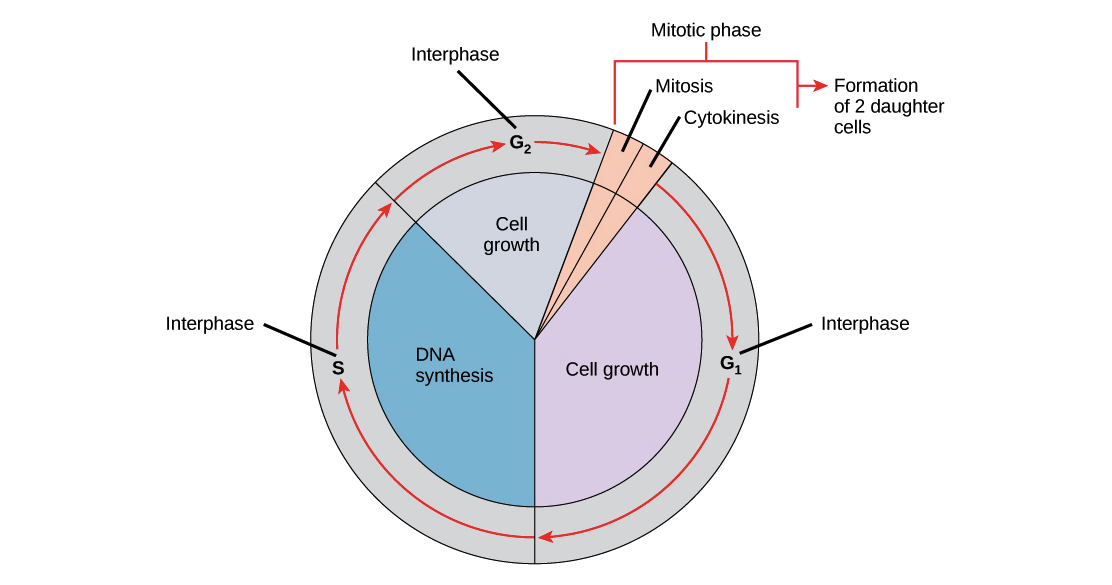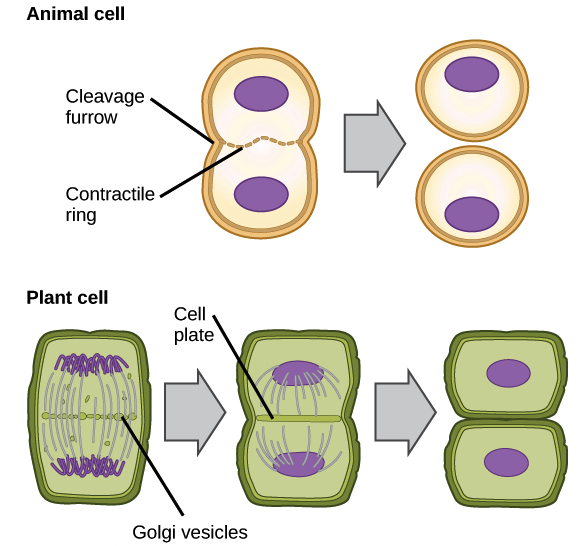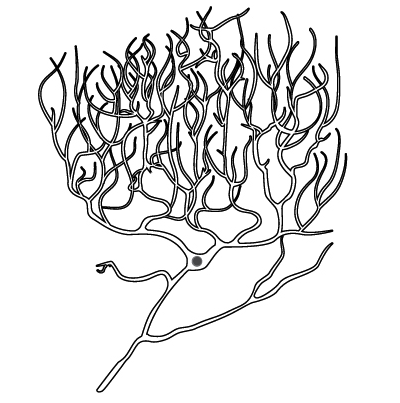Phases of the cell cycle
Introduction
Have you ever watched a caterpillar turn into a butterfly? If so, you’re probably familiar with the idea of a life cycle. Butterflies go through some fairly spectacular life cycle transitions—turning from something that looks like a worm into a pupa, and finally into a glorious creature that floats on the breeze. Other organisms, from humans to plants to bacteria, also have a life cycle: a series of developmental steps that an individual goes through from the time it is born until the time it reproduces.
The cell cycle can be thought of as the life cycle of a cell. In other words, it is the series of growth and development steps a cell undergoes between its “birth”—formation by the division of a mother cell—and reproduction—division to make two new daughter cells.
Stages of the cell cycle
To divide, a cell must complete several important tasks: it must grow, copy its genetic material (DNA), and physically split into two daughter cells. Cells perform these tasks in an organized, predictable series of steps that make up the cell cycle. The cell cycle is a cycle, rather than a linear pathway, because at the end of each go-round, the two daughter cells can start the exact same process over again from the beginning.
In eukaryotic cells, or cells with a nucleus, the stages of the cell cycle are divided into two major phases: interphase and the mitotic (M) phase.
During interphase, the cell grows and makes a copy of its DNA.
During the mitotic (M) phase, the cell separates its DNA into two sets and divides its cytoplasm, forming two new cells.
Interphase
Let’s enter the cell cycle just as a cell forms, by division of its mother cell. What must this newborn cell do next if it wants to go on and divide itself? Preparation for division happens in three steps:
G1_11start subscript, 1, end subscript phase. During G1_11start subscript, 1, end subscript phase, also called the first gap phase, the cell grows physically larger, copies organelles, and makes the molecular building blocks it will need in later steps. [[Do cells always grow before they divide?]](javascript:void(0))
S phase. In S phase, the cell synthesizes a complete copy of the DNA in its nucleus. It also duplicates a microtubule-organizing structure called the centrosome. The centrosomes help separate DNA during M phase.
G2_22start subscript, 2, end subscript phase. During the second gap phase, or G2_22start subscript, 2, end subscript phase, the cell grows more, makes proteins and organelles, and begins to reorganize its contents in preparation for mitosis. G2_22start subscript, 2, end subscript phase ends when mitosis begins.
The G1_11start subscript, 1, end subscript, S, and G2_22start subscript, 2, end subscript phases together are known as interphase. The prefix inter- means between, reflecting that interphase takes place between one mitotic (M) phase and the next.

Image of the cell cycle. Interphase is composed of G1 phase (cell growth), followed by S phase (DNA synthesis), followed by G2 phase (cell growth). At the end of interphase comes the mitotic phase, which is made up of mitosis and cytokinesis and leads to the formation of two daughter cells. Mitosis precedes cytokinesis, though the two processes typically overlap somewhat.
Image credit: "The cell cycle: Figure 1" by OpenStax College, Biology (CC BY 3.0).
M phase
During the mitotic (M) phase, the cell divides its copied DNA and cytoplasm to make two new cells. M phase involves two distinct division-related processes: mitosis and cytokinesis.
In mitosis, the nuclear DNA of the cell condenses into visible chromosomes and is pulled apart by the mitotic spindle, a specialized structure made out of microtubules. Mitosis takes place in four stages: prophase (sometimes divided into early prophase and prometaphase), metaphase, anaphase, and telophase. You can learn more about these stages in the video on mitosis.
In cytokinesis, the cytoplasm of the cell is split in two, making two new cells. Cytokinesis usually begins just as mitosis is ending, with a little overlap. Importantly, cytokinesis takes place differently in animal and plant cells.

Cytokinesis in animal and plant cells.
In an animal cell, a contractile ring of cytoskeletal fibers forms at the middle of the cell and contracts inward, producing an indentation called the cleavage furrow. Eventually, the contractile ring pinches the mother cell in two, producing two daughter cells.
In a plant cell, vesicles derived from the Golgi apparatus move to the middle of the cell, where they fuse to form a structure called the cell plate. The cell plate expands outwards and connects with the side walls of the cell, creating a new cell wall that partitions the mother cell to make two daughter cells.
Image credit: "The cell cycle: FIgure 4" by OpenStax College, Biology (CC BY 3.0).
In animals, cell division occurs when a band of cytoskeletal fibers called the contractile ring contracts inward and pinches the cell in two, a process called contractile cytokinesis. The indentation produced as the ring contracts inward is called the cleavage furrow. Animal cells can be pinched in two because they’re relatively soft and squishy.
Plant cells are much stiffer than animal cells; they’re surrounded by a rigid cell wall and have high internal pressure. Because of this, plant cells divide in two by building a new structure down the middle of the cell. This structure, known as the cell plate, is made up of plasma membrane and cell wall components delivered in vesicles, and it partitions the cell in two.
Cell cycle exit and G0_00start subscript, 0, end subscript
What happens to the two daughter cells produced in one round of the cell cycle? This depends on what type of cells they are. Some types of cells divide rapidly, and in these cases, the daughter cells may immediately undergo another round of cell division. For instance, many cell types in an early embryo divide rapidly, and so do cells in a tumor.
Other types of cells divide slowly or not at all. These cells may exit the G1_11start subscript, 1, end subscript phase and enter a resting state called G0_00start subscript, 0, end subscript phase. In G0_00start subscript, 0, end subscript, a cell is not actively preparing to divide, it’s just doing its job. For instance, it might conduct signals as a neuron (like the one in the drawing below) or store carbohydrates as a liver cell. G0_00start subscript, 0, end subscript is a permanent state for some cells, while others may re-start division if they get the right signals.

Image of a neuron with a complex branching structure; this type of neuron is called a Purkinje cell.
Image modified from "Neurons and glial cells: Figure 3" by OpenStax College (CC BY 3.0).
How long does the cell cycle take?
Different cells take different lengths of time to complete the cell cycle. A typical human cell might take about 24 hours to divide, but fast-cycling mammalian cells, like the ones that line the intestine, can complete a cycle every 9-10 hours when they're grown in culture1,2^{1,2}1,2start superscript, 1, comma, 2, end superscript.
Different types of cells also split their time between cell cycle phases in different ways. In early frog embryos, for example, cells spend almost no time in G1_11start subscript, 1, end subscript and G2_22start subscript, 2, end subscript and instead rapidly cycle between S and M phases—resulting in the division of one big cell, the zygote, into many smaller cells
 Knowt
Knowt
